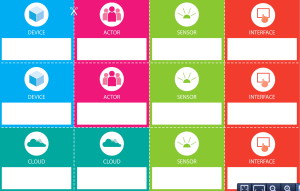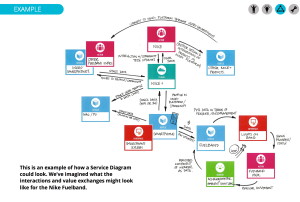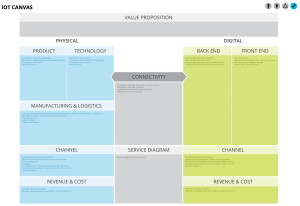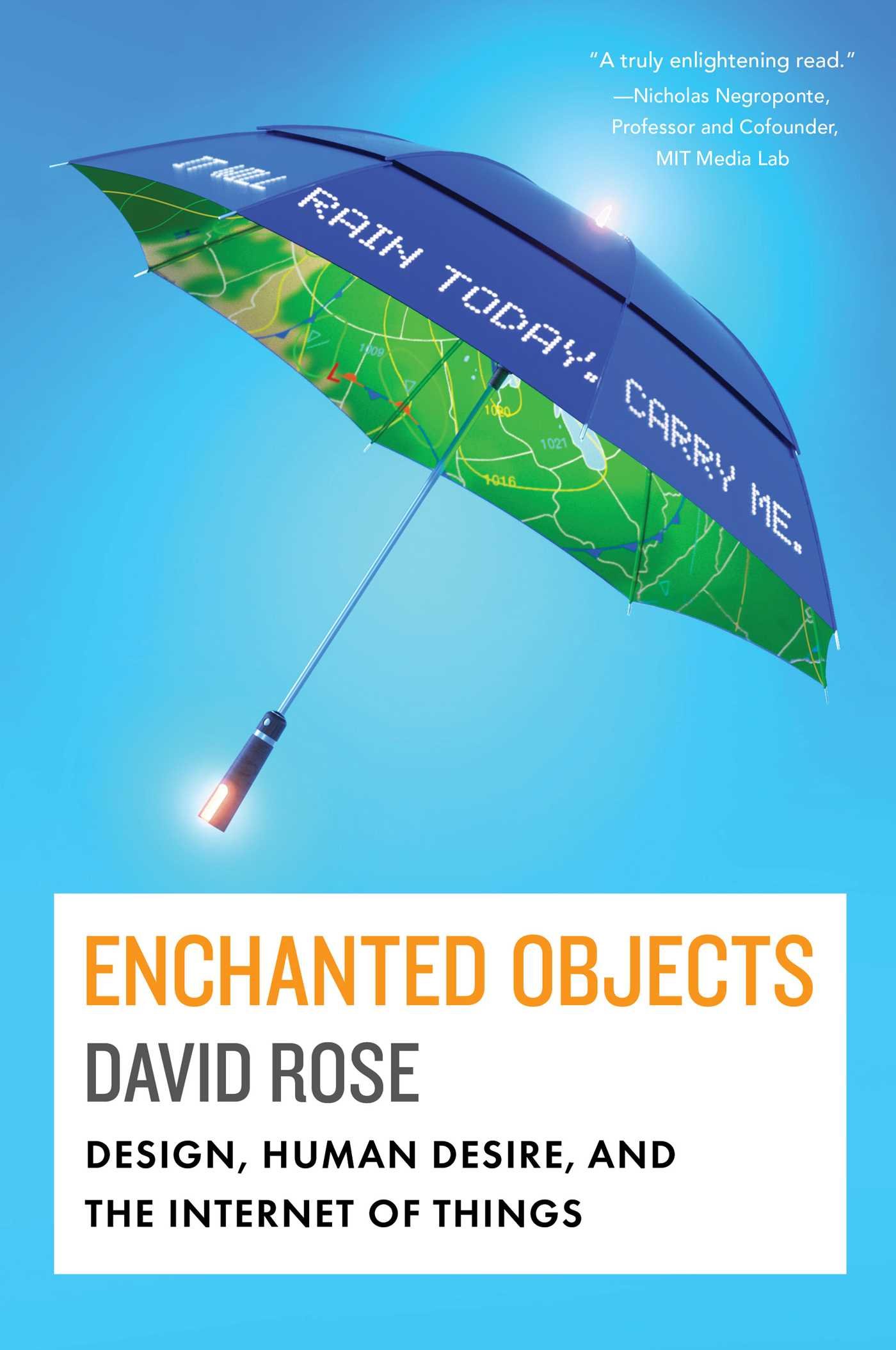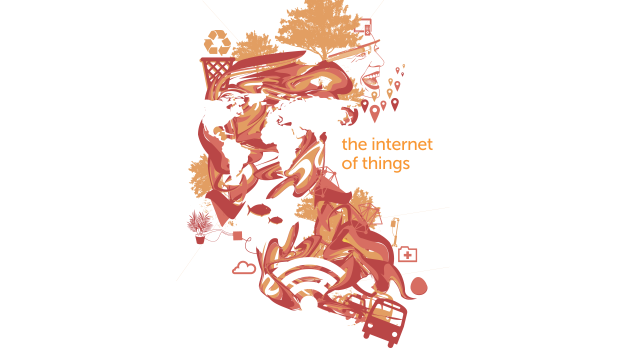Some IoT advances are as important symbolically (especially as key steps in the IoT’s maturation) as in their own right.
I consider Claro Partners‘s new “A Guide to Succeeding in the Internet of Things” in that vein, both showing that it’s not just enough to create a whizbang IoT device or app — you need a methodical strategy to maximize the benefits– and providing a very practical tool to create such a strategy. Written as the IoT reaches the top of the Gartner Hype Cycle, it aims at helping readers identify and meet real user needs and create viable business models. Based on several conversations at last night’s Boston IoT Meetup, it couldn’t be more timely, as (for example) smart home device sales slump, as reflected in Quirky’s bankruptcy.
Claro, in case you haven’t heard about them before, is headquartered in my favorite “smart city,” Barcelona, and is known for its Clayton Christensen-style emphasis on the opportunities presented by disruptive change (hmm: wonder if they have wei ji ideograms on the wall, LOL?), particularly with the IoT.
The Guide is a quick read, but can inspire you for a long time to come.
It’s divided into four portions, which I’m guessing codify the process that Claro uses internally to brainstorm strategies for its own clients:
- Define the challenge. “Identify a user-centric challenge to solve.”
- Ideate* the solution. “Create a solution that provides new value to the user.”
- Develop the offer. “Map out the ecosystem and interactions of your product and service.”
- Plan for production. “Identify resources needed and conduct gap analysis.”
They suggest you follow these steps sequentially, even if you already have a solution in mind, because “the exercises will help you to refine, develop or rethink it.”
Now for the details, which include very specific steps and some very helpful graphic aids.
First, Define the challenge. They stress you need to avoid being seduced by the lure of doing something just because it’s technologically possible. Make sure it meets a real
human need. The initial categories they suggest include:
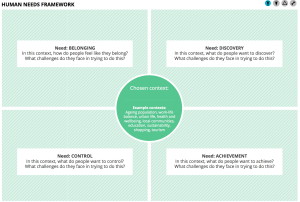 Ageing population (sweeeeet! My “smart aging” paradigm shift!)
Ageing population (sweeeeet! My “smart aging” paradigm shift!)- Work-life balance
- Urban life
- Health and wellbeing
- Local Communities
- Education
- Sustainability/Shopping
- Tourism, Family.
Then Claro suggests that your team go through a 30-minute process where it uses the four questions in this “human needs framework,” such as “what do people want to control?” and decide which challenge you’re going to design for (assume you could think big and try for one that meets multiple questions).
Second, Ideate the solution. Similar to my “What can you do now that you couldn’t do before” question, this one asks you to not just use the IoT to refine a current approach to the issue you identified, but to “reimagine entirely new capabilities and value that an IoT service can deliver.”
This 40-min. process includes defining the person facing the challenge and aspects of their life, then brainstorming solutions to meet their real needs and how the IoT could be used to enable that solution.
Third, Develop the offer. They share my concern about proprietary IoT solutions, (which they label “intranet of things, LOL), and instead remind your team to, IFTTT-like,
“take advantage of the ecosystem enabled by the IoT to create interconnected services, experiences and business models.” In this process, which they estimate takes 40 minutes, you print out the IoT Service Diagram Cards (see above — I imagine “flipping” them and trading with the other kids on the playground, until our Moms throw out our collections…) and use them to map out how your idea will work, including drawing the data flow (don’t forget my dictum that data flow must be cyclical with the IoT!). The important questions to ask — make sure to ask all of them! — include:
- Will the device just provide information to the user or will it act on that information?
- What are the specific inputs/outputs of the service? (eg. sight, sounds, touch, taste, smell, temperature)
- Could the device learn through its use over time and adapt its behaviour accordingly?
- Could the service use existing devices, data streams or interfaces?
Finally, in the fourth step, (30 minutes? Dream on!) the rubber hits the road, and you
Plan for Production! Claro warns, “Don’t underestimate the complexity of bringing to life an offer that spans both the physical and digital, Do map out all the elements you’ll need to successfully develop and deliver your IoT offer.”
On the IoT Canvas, you bring together all the crucial considerations, such as manufacturing and logistics, revenues and costs, that must be nailed down to make the product affordable and profitable. Specifically, Claro says you need to specifically state the offer’s value proposition to the end user, use the questions in each box on the form as prompts, fill out the rest of the canvas with details of the product and service idea, and write down “which resources, capabilities and processes you have, and which you’d need to acquire (gap analysis).”
I agree with Claro that these four steps, especially the last one, are iterative, and you need to revisit each of them throughout the entire conceptual and production process.
I have no doubt that, as IoT technology (especially miniscule, low-energy sensors) and experience continues to evolve, this process will be refined, but Claro has done the entire IoT industry, especially makers and entrepreneurs, a real service by codifying this approach and being willing to share it — after all, the IoT’s all about collaboration!
*we’ll let them off with a warning from the Grammar Police this time. However, please, no more management babble in the future, OK?
